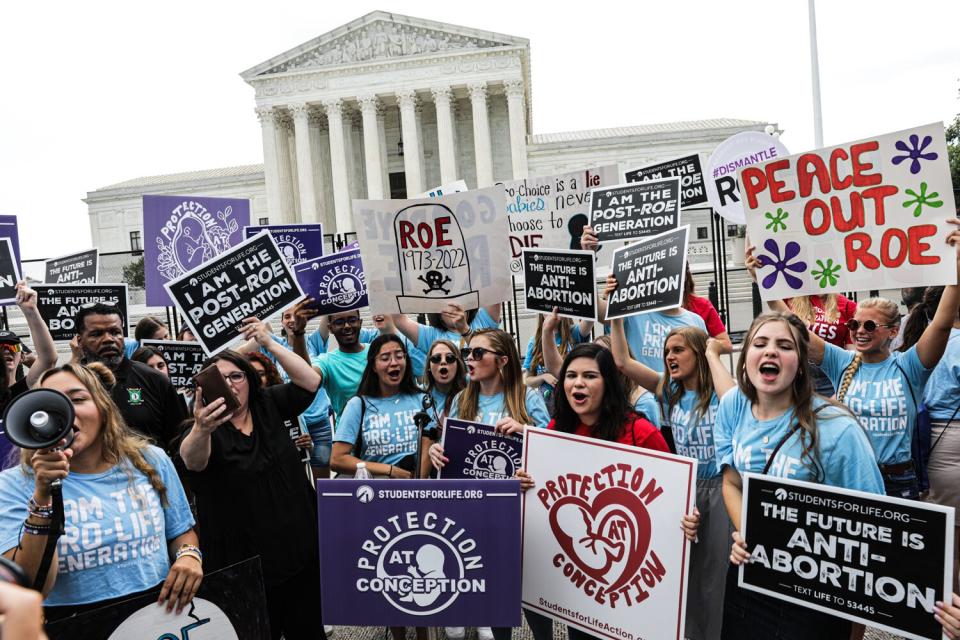White House Knocks Down Calls to Expand SCOTUS in Wake of Abortion Ruling

- Oops!Something went wrong.Please try again later.
- Oops!Something went wrong.Please try again later.
Though he's been openly critical of recent Supreme Court rulings overturning Roe v. Wade and expanding gun rights, President Joe Biden isn't interested in expanding the court.
"That is something that the president does not agree with," White House press secretary Karine Jean-Pierre told reporters on Air Force One over the weekend, according to a pool report. "That is not something that he wants to do."
Some Democrats have proposed the idea of expanding the court as a way to restore balance. Currently, the court is comprised of a conservative supermajority, with six conservative-leaning justices and three liberal-leaning justices. Three of those conservative justices — Neil Gorsuch, Brett Kavanaugh and Amy Coney Barrett — were appointed during former President Donald Trump's single term in office.
Lawmakers including Massachusetts Democrat Ed Markey and New York Democrat Alexandria Ocasio-Cortez have tweeted their support for expanding the court in recent days.
"If this extremist Court will dismantle something as fundamental as the right for an American to make decisions about their own body, then we are on a slippery slope to the undoing of other fundamental rights," Markey wrote on Twitter. "But Congress can act. We can expand the Court and protect our rights."

Valerie Plesch/Bloomberg via Getty Protesters demonstrate outside of the Supreme Court
Markey — along with Democratic Reps. Jerry Nadler, Hank Johnson and Mondaire Jones — introduced legislation in 2021 that aimed to expand the court to 13 justices.
"Thirteen justices would mean one justice per circuit court of appeals, consistent with how the number of justices was originally determined, so each justice can oversee one circuit," Johnson said in a press release announcing the legislation. "It's time that we start thinking about the Supreme Court like we think about the rest of the federal government and consider whether and how its current composition allows it to effectively do what we need it to do — efficiently and effectively administer justice and uphold the rule of law."
RELATED: President Joe Biden Calls Supreme Court's Decision to Overturn Roe v. Wade 'a Tragic Error'
Following his election, Biden appointed a bipartisan commission to study the impact of potential reforms to the Supreme Court, including "the length of service and turnover of justices on the Court; the membership and size of the Court; and the Court's case selection, rules, and practices." The report cited "profound disagreement among" members of the commission regarding whether "adding Justices to the Supreme Court at this moment in time would be wise."
The finished report notes that Article III of the Constitution provides that "judicial Power of the United States, shall be vested in one Supreme Court." The Constitution does not, however, specify how many justices should be on that court.
Never miss a story — sign up for PEOPLE's free daily newsletter to stay up-to-date on the best of what PEOPLE has to offer, from juicy celebrity news to compelling human interest stories.
The court has been expanded in the past and started as a six-member body in 1789. It was later reduced to five members, restored back to six a year later, increased to seven in 1807 and, in 1837, expanded to nine members, where it has remained since.

